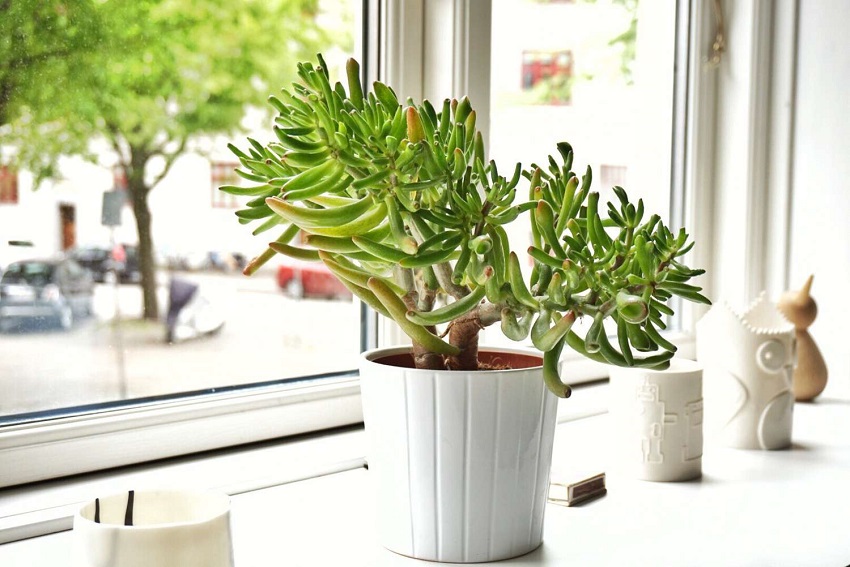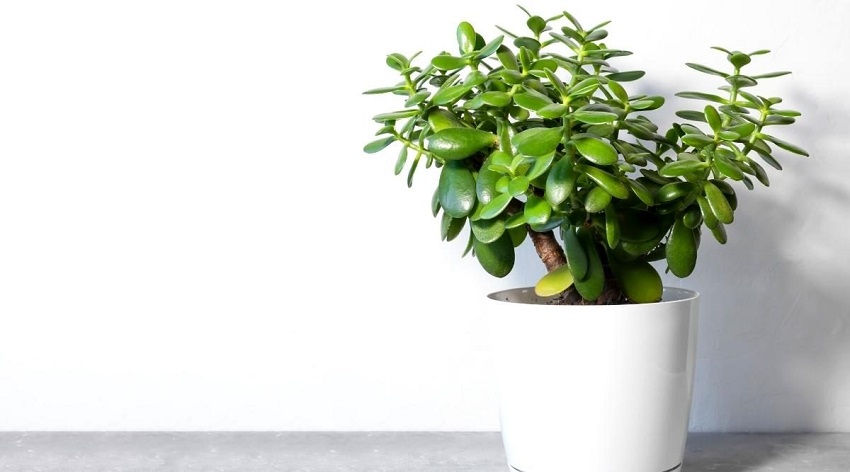
24 Jun Jade Plant Care: A Guide to Growing and Nurturing Your Jade Plant
If you’re a plant enthusiast looking for an easy-to-grow, beautiful addition to your indoor garden, the jade plant (Crassula ovata) is an excellent choice. With its thick, succulent leaves and tree-like appearance, the jade plant adds a touch of elegance and charm to any space. In this article, we will explore the essential aspects of jade plant care, including watering, lighting, soil requirements, propagation techniques, and common challenges that may arise. So, let’s dive into the world of jade plants and discover how to nurture these resilient beauties. The content has collaborated with https://aliceswonderlandnursery.com/
The Resilient Jade Plant
The jade plant, also known as the money plant or friendship tree, is a native of South Africa and belongs to the Crassulaceae family. It has gained popularity among plant lovers worldwide due to its attractive appearance and low-maintenance nature. With proper care, a jade plant can thrive for many years, making it an ideal choice for both beginner and experienced gardeners. Dive deeper into the large indoor plants and trees.
Understanding Light Requirements for Jade Plants
One of the crucial factors in jade plant care is providing adequate light. Jade plants thrive in bright, indirect sunlight, mimicking the conditions they would experience in their natural habitat. Place your jade plant near a south-facing window where it can receive bright light for at least four hours daily. However, be cautious of direct sunlight, as intense rays can scorch the leaves. If natural light is limited, you can supplement it with fluorescent grow lights placed a few feet above the plant.
Watering: Finding the Right Balance
Maintaining a proper watering routine is essential for the health of your jade plant. As a succulent, the jade plant stores water in its leaves and stems, enabling it to withstand periods of drought. To prevent overwatering, allow the soil to dry out completely between watering sessions. When you do water, ensure thorough saturation of the soil, allowing excess water to drain out. Avoid leaving your jade plant in standing water, as this can lead to root rot and other problems.
Soil Requirements: The Foundation of Healthy Growth
Choosing the right soil mix is crucial for the overall well-being of your jade plant. A well-draining soil mix is ideal to prevent waterlogged roots. You can create a suitable mix by combining equal parts of potting soil, perlite, and coarse sand. This blend provides excellent drainage while retaining enough moisture for the plant’s needs. Avoid using heavy clay-based soils, as they tend to retain water and can cause root rot.
Propagation: Multiplying Your Jade Plant Collection
If you want to expand your jade plant collection or share the joy of growing these magnificent plants with others, propagation is an exciting option. Jade plants can be propagated through stem cuttings or leaf cuttings. For stem cuttings, choose a healthy, non-flowering stem and allow it to callous over for a couple of days. Place the cutting in a well-draining soil mix and keep it lightly moist until roots develop. Leaf cuttings can also be taken from healthy leaves, which should be placed in a similar soil mix until new plants emerge.
Common Challenges: Troubleshooting Jade Plant Issues
While jade plants are generally hardy, they can encounter a few challenges along the way. Here are some common issues you may encounter and tips for resolving them:
1. Overwatering and Root Rot
Overwatering is a common problem for jade plants. To avoid this, always allow the soil to dry out between waterings, and ensure that the pot has proper drainage holes. If you suspect root rot, remove the affected parts and repot the plant in fresh, well-draining soil.
2. Leaf Drop
Leaf drop can occur due to various reasons, including overwatering, underwatering, or sudden changes in environmental conditions. Ensure you provide consistent care, avoiding extremes in watering and temperature. With time, the plant will adjust, and new leaves will grow.
3. Pest Infestation
Jade plants can sometimes attract pests like mealybugs or spider mites. Keep a close eye on your plant and regularly inspect the leaves for signs of infestation. If you notice any pests, gently wipe them off with a damp cloth or use an organic insecticidal soap to control the infestation.
Conclusion
In conclusion, caring for a jade plant can be a rewarding experience, as these resilient plants bring natural beauty and positive energy into your living space. Remember to provide ample bright, indirect light, maintain a balanced watering routine, and use well-draining soil. With proper care and attention, your jade plant will flourish, creating an enchanting focal point in your home or office.
FAQs (Frequently Asked Questions)
- How often should I water my jade plant?
The frequency of watering depends on various factors such as humidity, temperature, and pot size. As a general guideline, water your jade plant when the soil is completely dry, typically every two to three weeks.
- Can I place my jade plant outside?
Jade plants are sensitive to extreme temperatures and thrive best in controlled indoor environments. However, they can be moved outside during the summer months, provided they are gradually acclimated to the new conditions.
- My jade plant has become leggy. What should I do?
Leggy growth is often a result of inadequate light. To encourage compact and bushy growth, move your jade plant to a brighter location or provide supplemental grow lights.
- Can I use tap water for watering my jade plant?
Tap water can contain chemicals and minerals that may be harmful to jade plants. It is recommended to use filtered or distilled water to prevent the buildup of salts in the soil.
- Is the jade plant toxic to pets?
Yes, jade plants are toxic to cats, dogs, and other pets if ingested. Keep your jade plant out of reach to ensure the safety of your furry friends.



Sorry, the comment form is closed at this time.